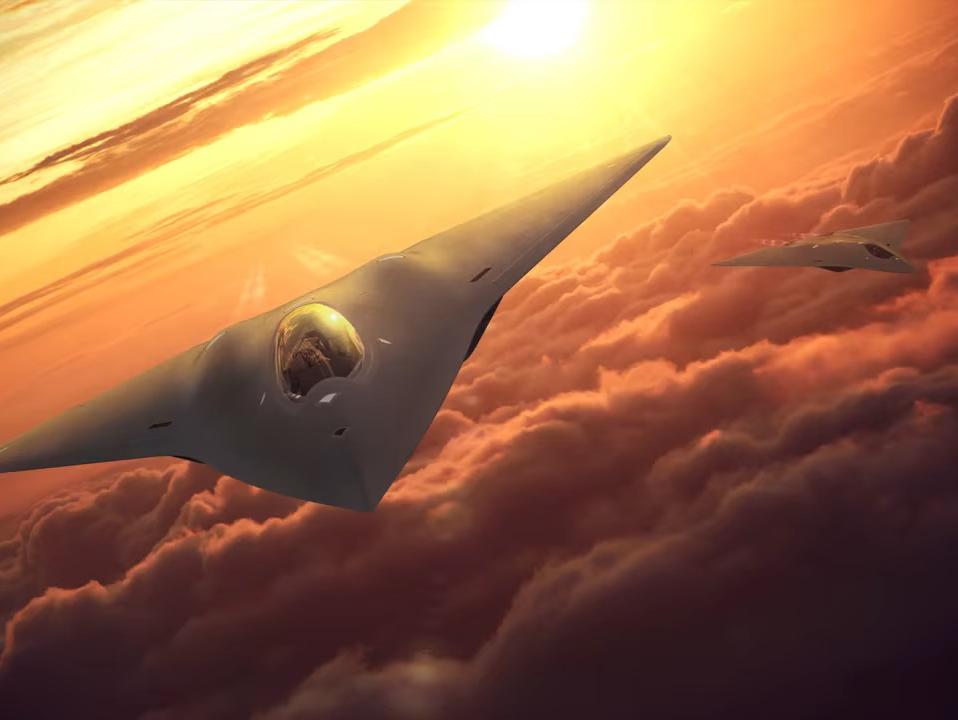Six predictions for USAF's sixth generation fighter jet – experts at Raytheon explain

Prototypes of the US Air Force’s sixth generation fighter jet, which is meant to be deployed in 2030, have already flown in secret.
Forming the centre piece of the service’s Next Generation Air Dominance (NGAD) programme, the fighter sometimes referred to as F-X, will replace the F-22 Raptor. Read all our articles on NGAD here.
Now technologists and engineers at Raytheon Intelligence & Space (RI&S) are working on the very same kinds of systems they believe will bring the kind of technical superiority USAF wants its new plane to deliver.
They are designing systems, including sensors, communications, electronic warfare, that will one day provide the technical superiority that a sixth generation fighter is meant to give.
Raytheon’s experts have six predictions for these advanced aircraft.
One system for everything
Sixth generation fighters could have a piece of gear that does multiple jobs, replacing different systems typically seen on today’s aircraft. This hardware would include adaptable software that changes between tasks in mere nanoseconds.
“You no longer have a radar, no longer have electronic warfare, no longer have a radio,” said Jason Clark, director for Advanced Mission Systems at RI&S. “Instead, you have multifunction hardware that does it all and can be repurposed very quickly – switching between functions so quickly it seems instantaneous.”

Flying data centres
The computer processing power for sixth generation fighters will reach staggering levels, taking the sophisticated mission computers aboard today’s aircraft and essentially turning the planes into flying data centres.
“Next generation multifunction systems will produce orders of magnitude more data than previous systems,” said Tomek Rys, business development director for communications & airspace management systems at RI&S. “On-board compute clusters composed of high-performance, ruggedised processors will effectively put a data centre in the sky. These systems will leverage artificial intelligence to turn data into information in real time. The result will be faster decision making.”
Related: US Air Force reveals first look at its new fighter jet
AI will be the wingman of the future
Pilots for sixth generation fighters could have help from nearby planes flown autonomously through a concept known as manned-unmanned teaming (MUM-T) or ‘loyal wingman’ drones.
“We’re realising underlying artificial intelligence and machine learning can support the idea of a manned aircraft commanding an unmanned team,” Clark said. “Today, a flight lead can command four or eight other manned aircraft and expect them to go out and complete the mission on their own. Autonomous behaviours could allow for similar mission-level tasking for aircraft that are not necessarily controlled by a human.”
Future fighters will land on their own
Future aircraft may use new hardware and software to land autonomously on aircraft carriers. This type of technology is already advancing with the US Navy and Marine Corps.
“We are developing algorithms that can use future encrypted signals to safely guide aircraft to a precise landing zone in all-weather and terrain conditions,” said Marcelo Cavalcanti, director for international business development at RI&S. “The goal is to have aircraft land autonomously, but it can also serve as guidance to the pilot. I see this technology supporting VTOL (vertical takeoff and landing) aircraft, including future urban air mobility vehicles.”

Digital engineering will make costs clear up front
An endeavour as big as building a next generation fighter aircraft is hard to predict. Small glitches and design choices can affect costs and schedules years into the future. A digital thread that connects all data available could help the military predict costs and performance more accurately.
“The next level of digital engineering will be interconnectivity throughout the supply chain,” said Conn Doherty, senior director for future aircraft systems and technology at RI&S. “We’re working with aircraft makers and our suppliers to develop interconnectivity and two-way digital interfaces. This will dramatically reduce our turnaround times and reduce errors through automation, resulting in better solutions. Connecting in cost models will give us a more precise and accurate understanding of production, operations and maintenance costs for decades to come.”
Sensors will be swappable
Sensors on aircraft today use common interfaces that allow them to talk to computers on aircraft. This standardisation makes sense, considering the range of different and new hardware that may need to be plugged in one day.
“It’s almost plug-and-play for sensors,” said Jennifer Benson, chief engineer for advanced electro optical at RI&S. “Do I pick an electro-optical sensor to do a job? Or do I pick an infrared sensor? Future sensors may be modular enough to swap right on the flight line. We are designing today for that level of commonality and modularity in our sensors.”












